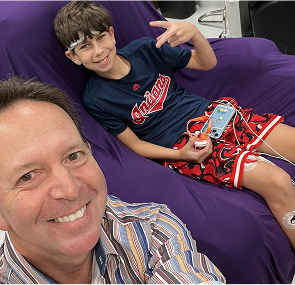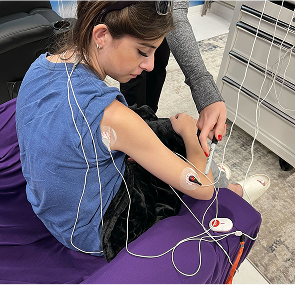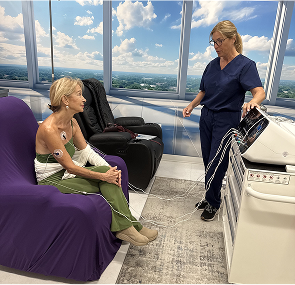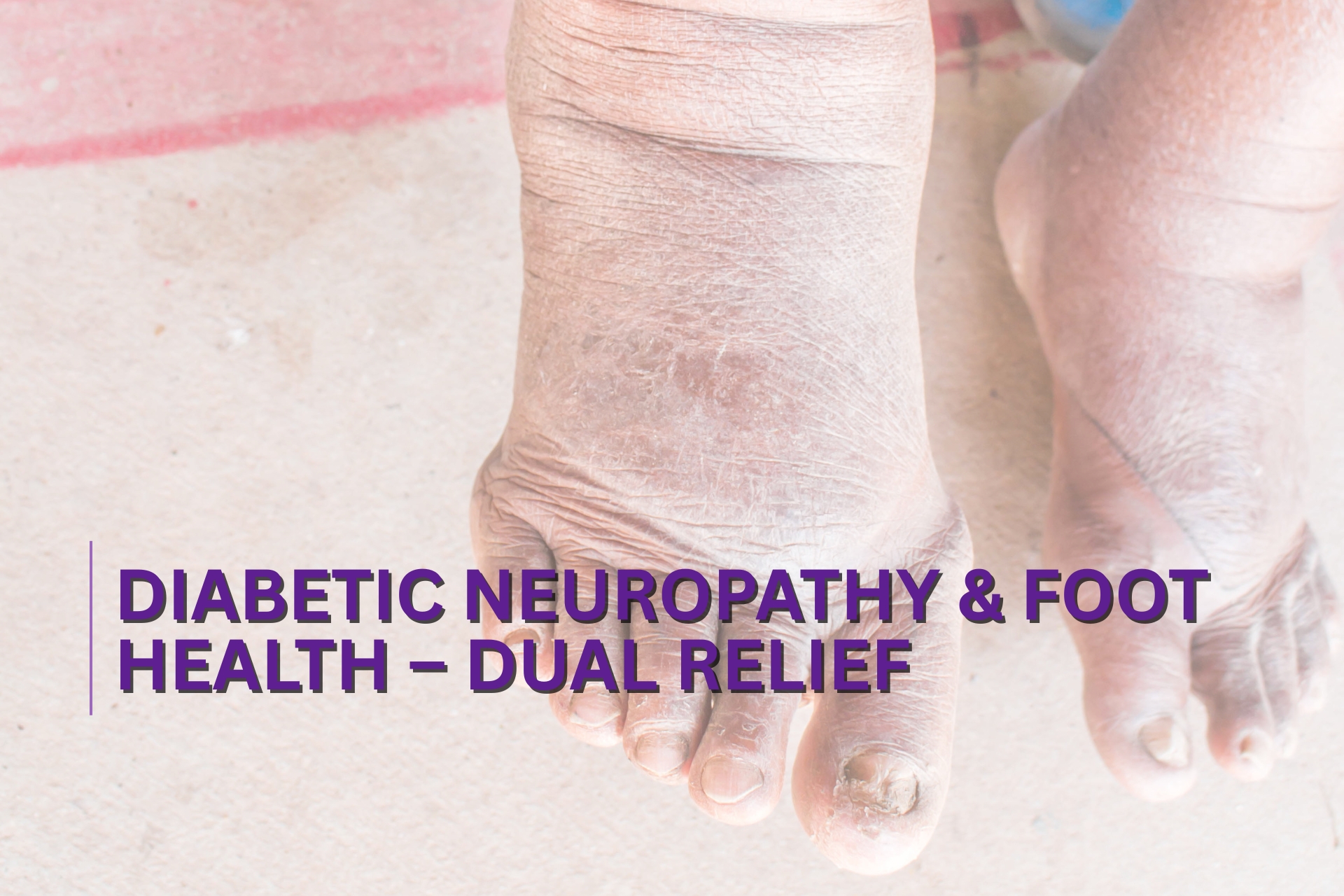Top Conditions Treated with Scrambler Therapy—And Why It’s a Game Changer

Chronic pain can now be effectively treated non-invasively with Scrambler Therapy. By interfering with pain signals transmitted by injured nerves, it provides comfort without the need for medication or surgery. It approaches the underlying source of neuropathic pain—abnormal nerve signaling—in contrast to conventional pain management techniques.
The therapy is FDA-cleared and used worldwide to manage pain from diabetes, cancer treatments, shingles, CRPS, and other nerve-related conditions. It uses electroanalgesia to "scramble" pain messages and retrain the nervous system to perceive normal, non-pain signals.
This article explains the top conditions Scrambler Therapy treats, why it's considered a game changer, and what makes it different from conventional pain treatments.
What Is Scrambler Therapy and What Conditions Does It Treat?
An FDA-approved non-invasive pain management technique called Scrambler Therapy aims to rewire persistent pain signals. It uses electroanalgesia to send “non-pain” messages through surface electrodes placed on the skin, targeting malfunctioning pain pathways via spinal nerves.
Scrambler Therapy is used to treat:
- Neuropathic pain (e.g., diabetic neuropathy, CIPN)
- Post-herpetic neuralgia (PHN)
- Complex Regional Pain Syndrome (CRPS)
- Cancer-related nerve pain
- Rare nerve disorders like trigeminal neuralgia and small fiber neuropathy
It delivers pain relief without medications or invasive procedures.
Next, you’ll read how Scrambler Therapy manages common nerve pain conditions effectively.
Which Neuropathic Pain Conditions Are Treated by Scrambler Therapy?
Scrambler Therapy is used for nerve pain caused by diabetes, chemotherapy, and viral infections.
1. Diabetic Neuropathy Relief
Patients with diabetic neuropathy often suffer from:
- Tingling and numbness
- Burning pain in feet and hands
- Sensory loss due to axonal injury
Scrambler Therapy helps by modulating nerve misfiring, reducing sensory dysfunction, and improving quality of life. Studies report significant pain reduction after 10–12 sessions.
2. CIPN Treatment (Chemotherapy-Induced Peripheral Neuropathy)
Following chemotherapy, up to 68% of cancer patients experience CIPN in the first month. Scrambler Therapy has been shown to:
- Decrease burning and tingling pain
- Improve walking and daily function
- Deliver long-lasting relief after treatment sessions
3. PHN Therapy (Post-Herpetic Neuralgia)
PHN follows shingles outbreaks. Nerve damage from herpes zoster can lead to chronic dermatomal pain. Scrambler Therapy interrupts these pain messages, relieving:
- Residual burning
- Hypersensitivity
- Shooting pain across the affected dermatome
We now move on to how Scrambler Therapy addresses one of the hardest-to-treat pain disorders: CRPS.
How Does Scrambler Therapy Help with Complex Regional Pain Syndrome (CRPS)?
CRPS involves intense regional pain, often in a limb, caused by injury or surgery. It comes in two types:
- Type I (Reflex Sympathetic Dystrophy): Without confirmed nerve injury
- Type II (Causalgia): With documented nerve trauma
Scrambler Therapy for CRPS
Patients report improvement in:
- Hypersensitivity and allodynia
- Swelling and skin temperature changes
- Regional burning and shooting pain
In a study published in Pain Physician, CRPS patients undergoing Scrambler Therapy experienced over 40% pain reduction within the first 2 weeks.
Next: how Scrambler Therapy helps cancer survivors cope with nerve damage.
How Does Scrambler Therapy Address Cancer-Related Nerve Pain?
Cancer treatments—surgery, chemo, and radiation—can injure nerves, leading to chronic pain. Scrambler Therapy supports oncology care by:
- Reducing chemo-induced neurotoxicity symptoms
- Soothing post-surgical pain (nerve entrapment, scar sensitivity)
- Treating radiation-related nerve trauma
Common Benefits for Cancer Patients
- Improved sleep and mobility
- Lower medication dependency
- Reduced CIPN symptoms (numbness, tingling)
Clinical trials reported pain scores falling from an average of 7 to 2 after multiple sessions.
We now turn to a common viral pain condition: post-shingles nerve damage.
Can Scrambler Therapy Help with Post-Shingles (PHN) Nerve Pain?
Yes. PHN, a complication of herpes zoster, leads to persistent pain that can last for months or years.
Symptoms Targeted by Scrambler Therapy:
- Persistent burning or stabbing pain
- Nerve hypersensitivity
- Dermatomal pain across the chest, back, or face
Zoster-related neuralgia responds well to Scrambler Therapy. Research shows 70–80% of patients report significant, sustained pain relief.
The next section features real-life stories of people treated for different pain conditions.
What Do Patients Say? Real Stories of Scrambler Therapy Success
1. CRPS Recovery – Lisa, Age 34
Lisa developed CRPS Type I after an ankle fracture. After 10 Scrambler sessions at South Florida Scrambler Therapy, her pain dropped from 9 to 2, and she regained normal use of her foot.
2. CIPN Experience – David, 61
David had nerve pain post-chemotherapy (CIPN). After three weeks of therapy, tingling and numbness in his hands improved, and he returned to piano playing.
3. Shingles Nerve Pain – Angela, 68
Angela’s PHN lasted over a year. Scrambler Therapy brought complete relief after 8 sessions. "I haven't experienced pain since shingles," she remarked.
The most frequently asked questions concerning Scrambler Therapy are then addressed.
FAQs About Conditions Treated by Scrambler Therapy
What Conditions Does Scrambler Therapy Treat?
- Diabetic neuropathy
- CIPN
- CRPS
- PHN
- Cancer-related nerve pain
- Small fiber neuropathy
- Trigeminal neuralgia
How Long Does a Session Take?
Each session lasts 40–50 minutes. Treatment plans often include 10–12 sessions over 2–3 weeks.
Are the Results Permanent?
Many patients experience long-term relief. Maintenance sessions are necessary for some people every few months, depending on the underlying issue.
What’s the Success Rate?
Studies show an average of 50–90% pain reduction, depending on the condition and severity.
Now we compare Scrambler Therapy to other pain management options.
How Is Scrambler Therapy Different from Other Pain Management Techniques?
Scrambler Therapy offers:
- Drug-free pain relief
- No tolerance buildup
- FDA-cleared alternative
Next: how to book a treatment session in South Florida.
How Can You Start Scrambler Therapy at South Florida Scrambler Therapy?
Booking Process:
- Schedule Consultation
Call or visit the clinic website. - Clinical Assessment
Specialists evaluate your medical history and pain symptoms. - Eligibility Check
Determine suitability for Scrambler Therapy based on diagnosis. - Session Setup
Customize your therapy plan. Sessions typically occur daily for 2 weeks. - Follow-Up
Track progress with pain scales and adjust as needed.
Let’s explore less common conditions that respond to Scrambler Therapy next.
What Rare or Emerging Conditions Does Scrambler Therapy Treat?
Scrambler Therapy also helps with uncommon and difficult-to-diagnose conditions.
Examples:
- Trigeminal Neuralgia: Electric-shock facial pain due to cranial nerve dysfunction
- Small Fiber Neuropathy: Burning pain in extremities with normal nerve conduction tests
- Pudendal Neuralgia: Pelvic pain linked to nerve compression or irritation
These conditions involve misfiring neurons, where Scrambler Therapy can retrain the nervous system to block incorrect pain signals.
We now explore the scientific research behind Scrambler Therapy’s success.
What Does Clinical Research Say About Scrambler Therapy?
Multiple peer-reviewed studies validate Scrambler Therapy’s efficacy.
Key Data:
- CIPN Study (J Support Oncol): 80% of patients had ≥50% pain relief after 10 sessions.
- PHN Study (Pain Practice): 70% reported sustained improvement after 6 months.
- CRPS Study (Pain Physician): Mean pain reduction of 4.6 on a 10-point scale.
Studies show minimal side effects and high patient satisfaction. The trials were published in PubMed-indexed publications and were placebo-controlled.
Next, we analyze quantitative outcomes reported from clinics and research.
What Are the Success Metrics and Outcomes of Scrambler Therapy?
Pain Scale Improvements:
- Average decrease of 5 points on the Numeric Pain Rating Scale (NPRS)
- 80% report at least 50% pain reduction post-treatment
Medication Use:
- 60% of individuals who receive treatment cut back on or quit using opioids.
Long-Term Results:
- Relief sustained for 3–6 months in most cases
- Maintenance sessions can extend benefits
These outcomes are tracked through patient-reported surveys, follow-ups, and published case series.
Experiencing Chronic Pain in South Florida?
.jpg)
Discover South Florida Scrambler Therapy is one of the nation’s leading clinics for noninvasive chronic pain relief, offering FDA-cleared Scrambler Therapy® for adults and children. Co-founded by Dr. Rick Markson, one of the few practitioners worldwide to receive advanced certification directly from the therapy’s inventor in Rome, our clinic delivers globally recognized expertise with compassionate, personalized care. If you or a loved one is living with treatment-resistant nerve pain, we invite you to schedule a consultation and explore a life beyond pain.
Recommended Reads:
📘 What is scrambler therapy?
📘 What to Expect During a Scrambler Session
📘 CRPS Pain Relief Without Drugs—Real Patient Stories
📘 Conditions that scrambler therapy can treat
Take the Next Step: Free Consultation at South Florida Scrambler

Every day counts when we suffer from chronic pain. South Florida Scrambler Therapy offers a free initial consultation to determine if Scrambler is right for you.
Schedule Today:
- Speak directly with Dr. Rick Markson’s team
- Learn about treatment protocols and insurance
- Complete a customized treatment plan
- Start seeing results within days, not months
📞 Call Now or Visit website: www.southfloridascramblertherapy.com
📍 We serve Palm Beach, Fort Lauderdale, and Miami from our location at 100 NW 100th Ave, Plantation
You Can Follow Us through Our Social Media:
📸Instagram—Day-in-the-life stories from our patients
👍Facebook—Success journeys and community support
You deserves to laugh, and enjoy life without pain. The journey starts here.
Start Your Nerve Pain-Free Journey Today






